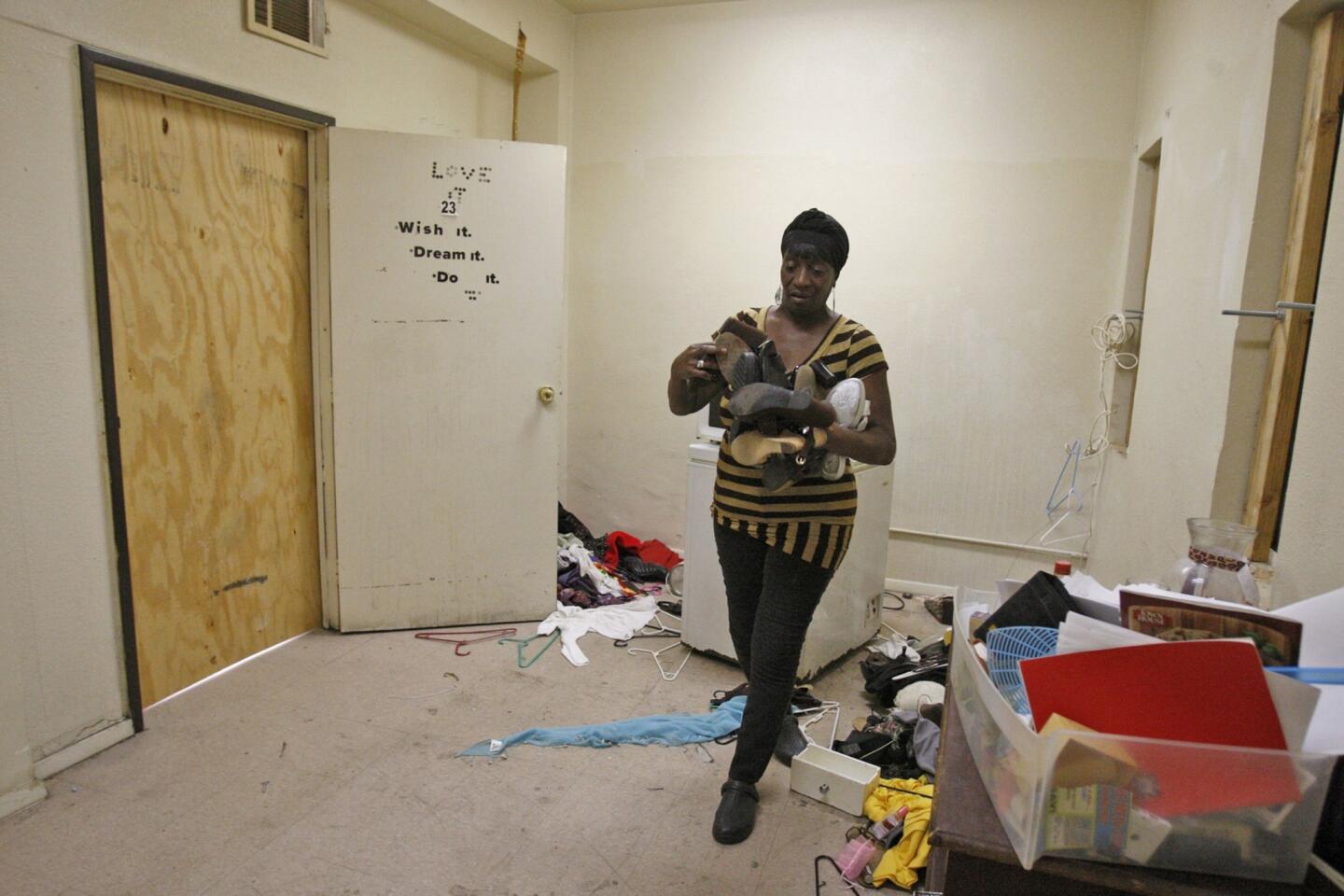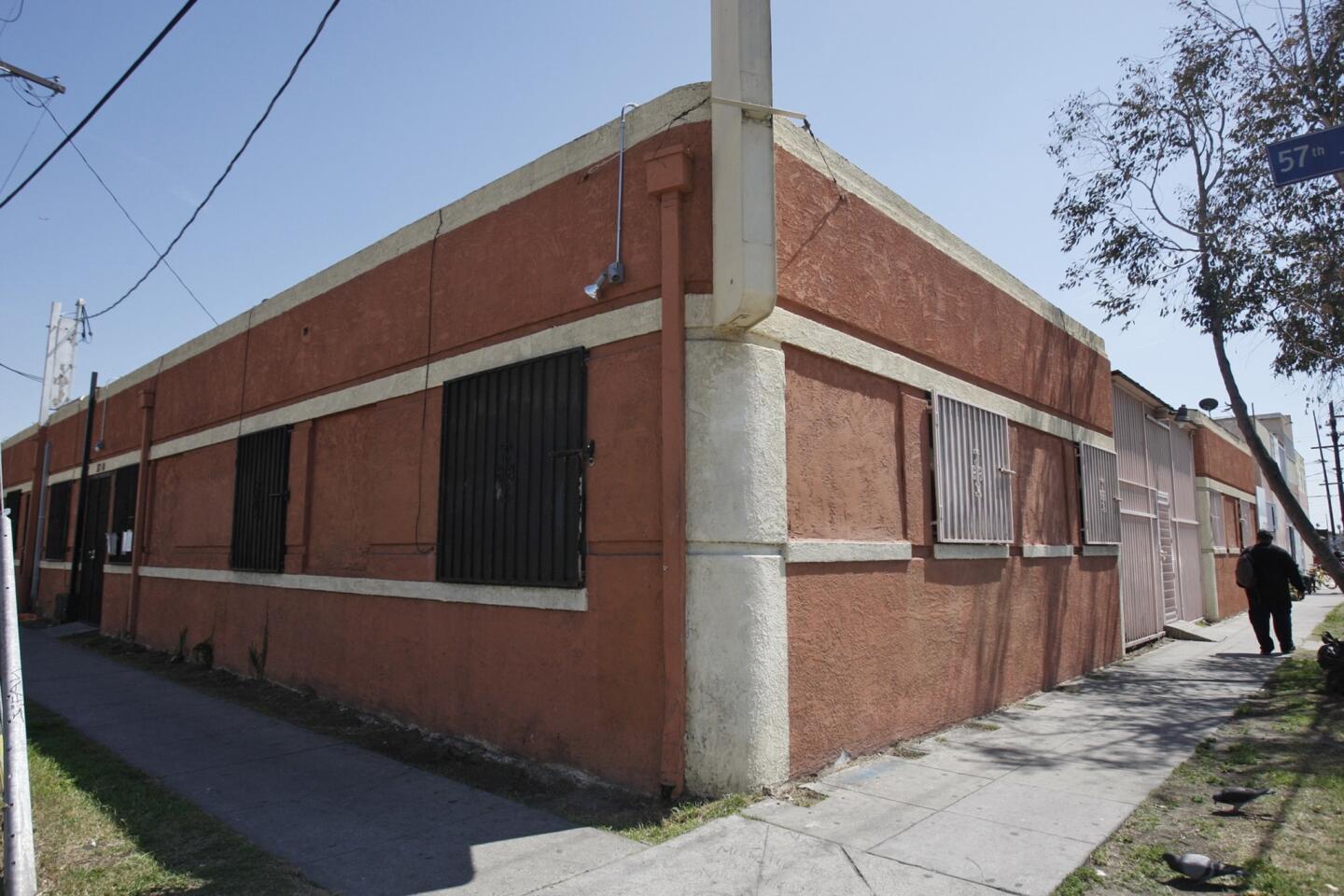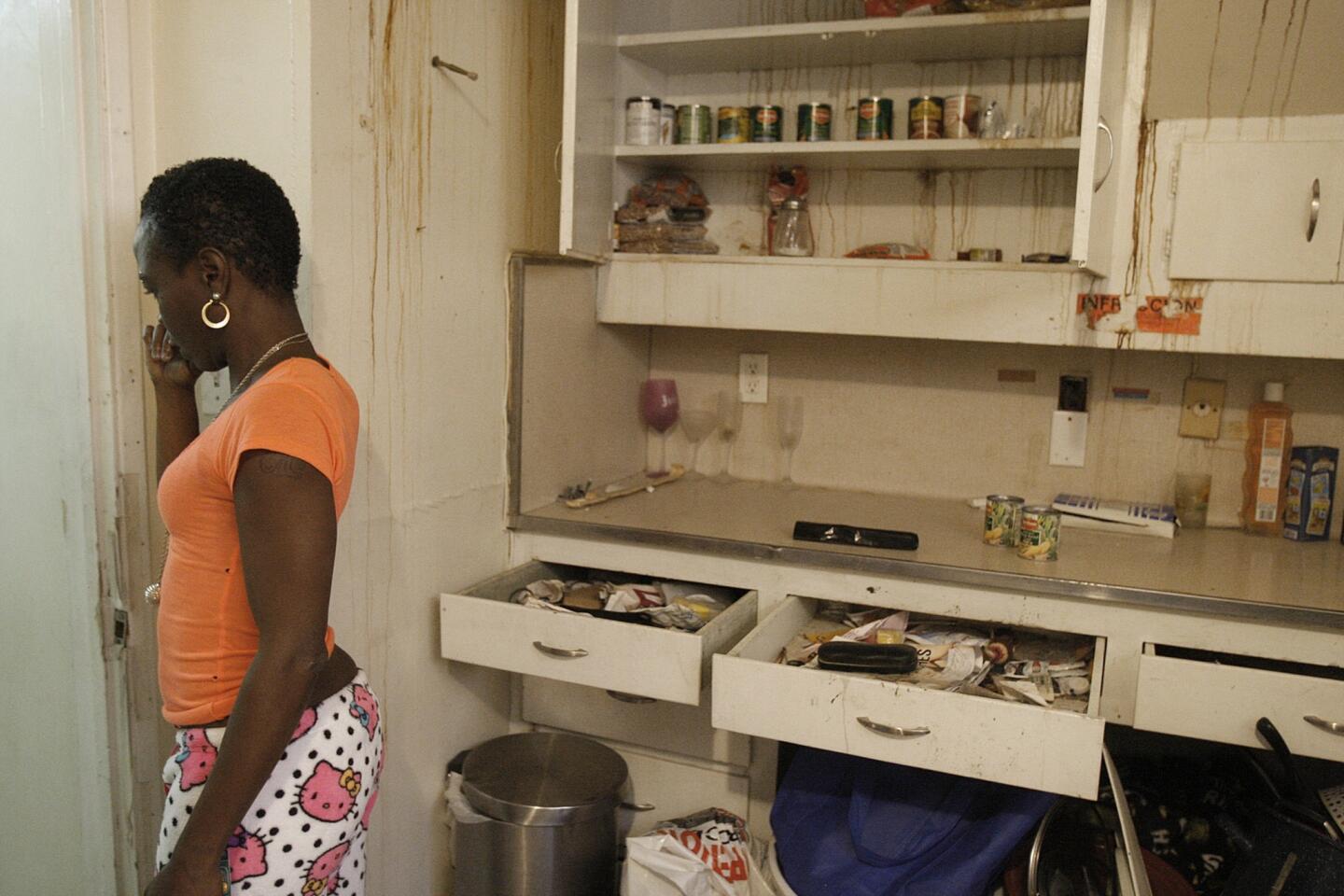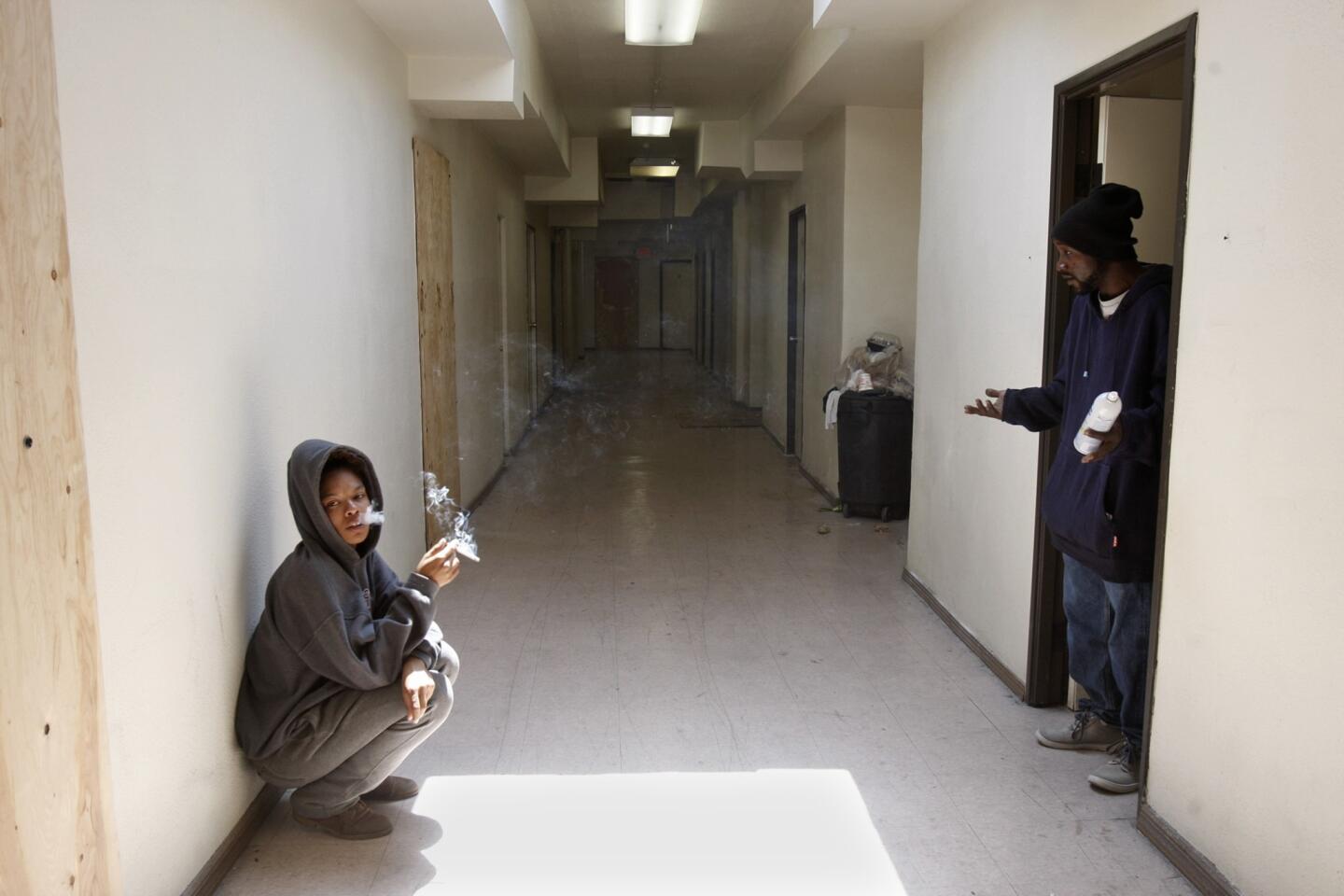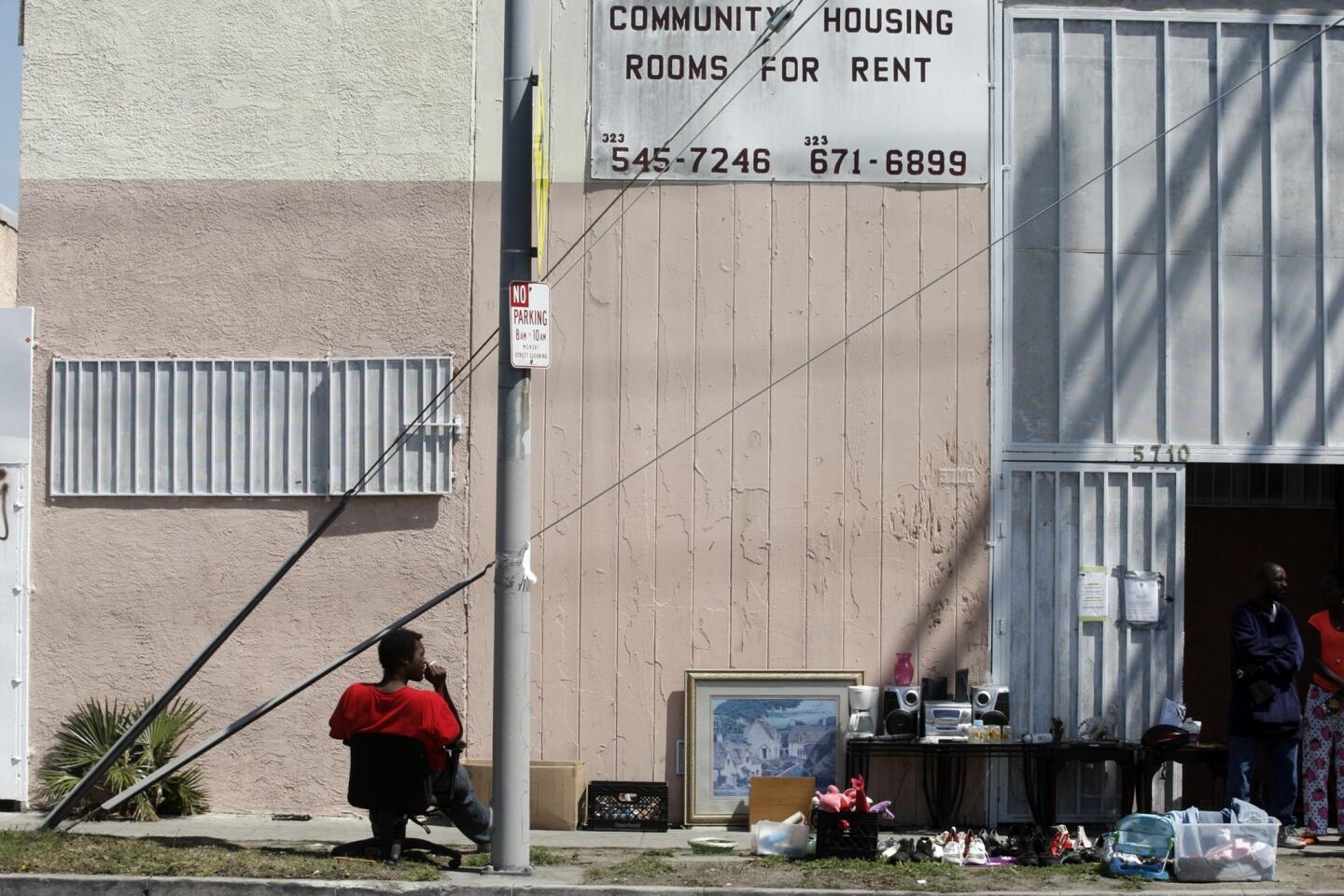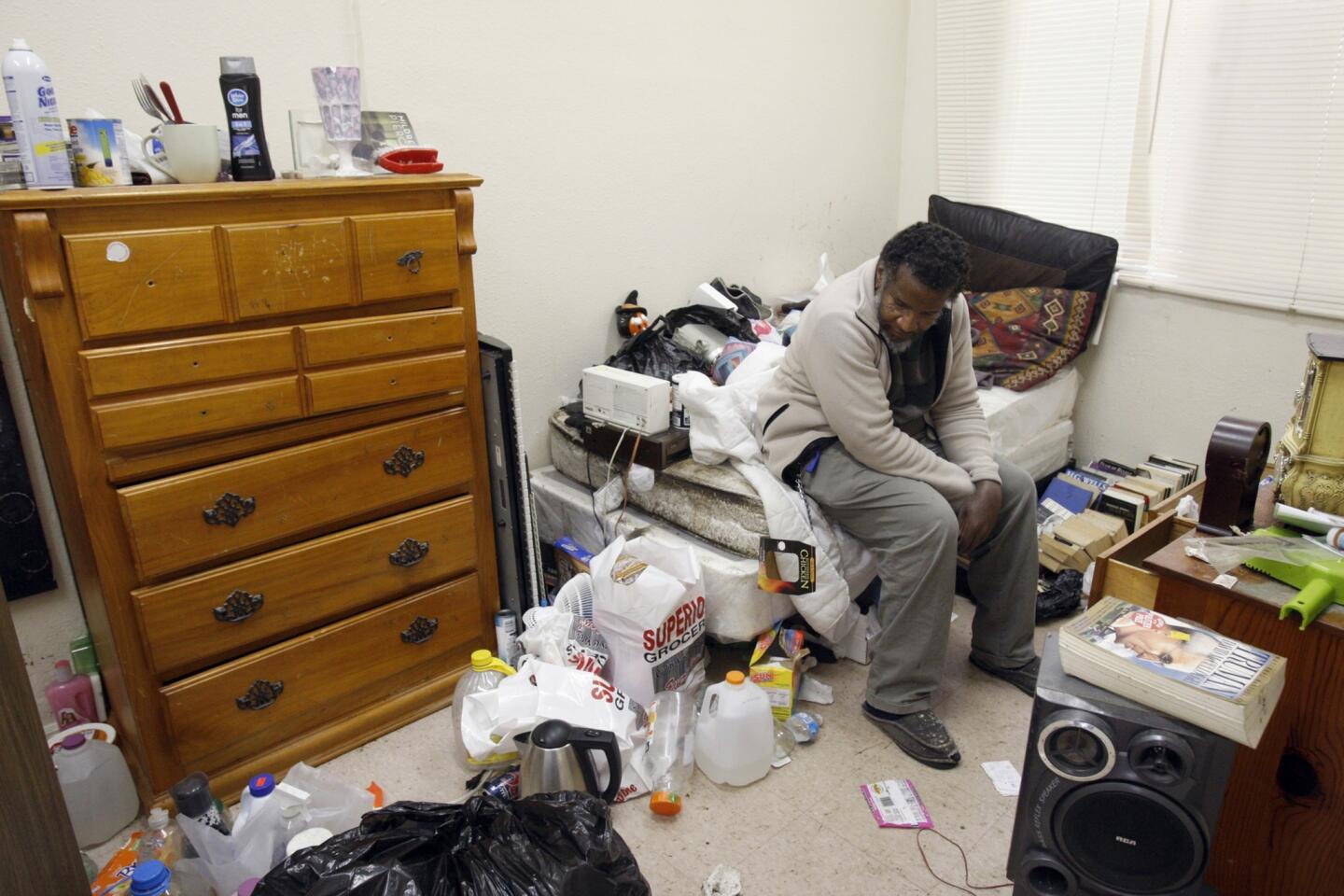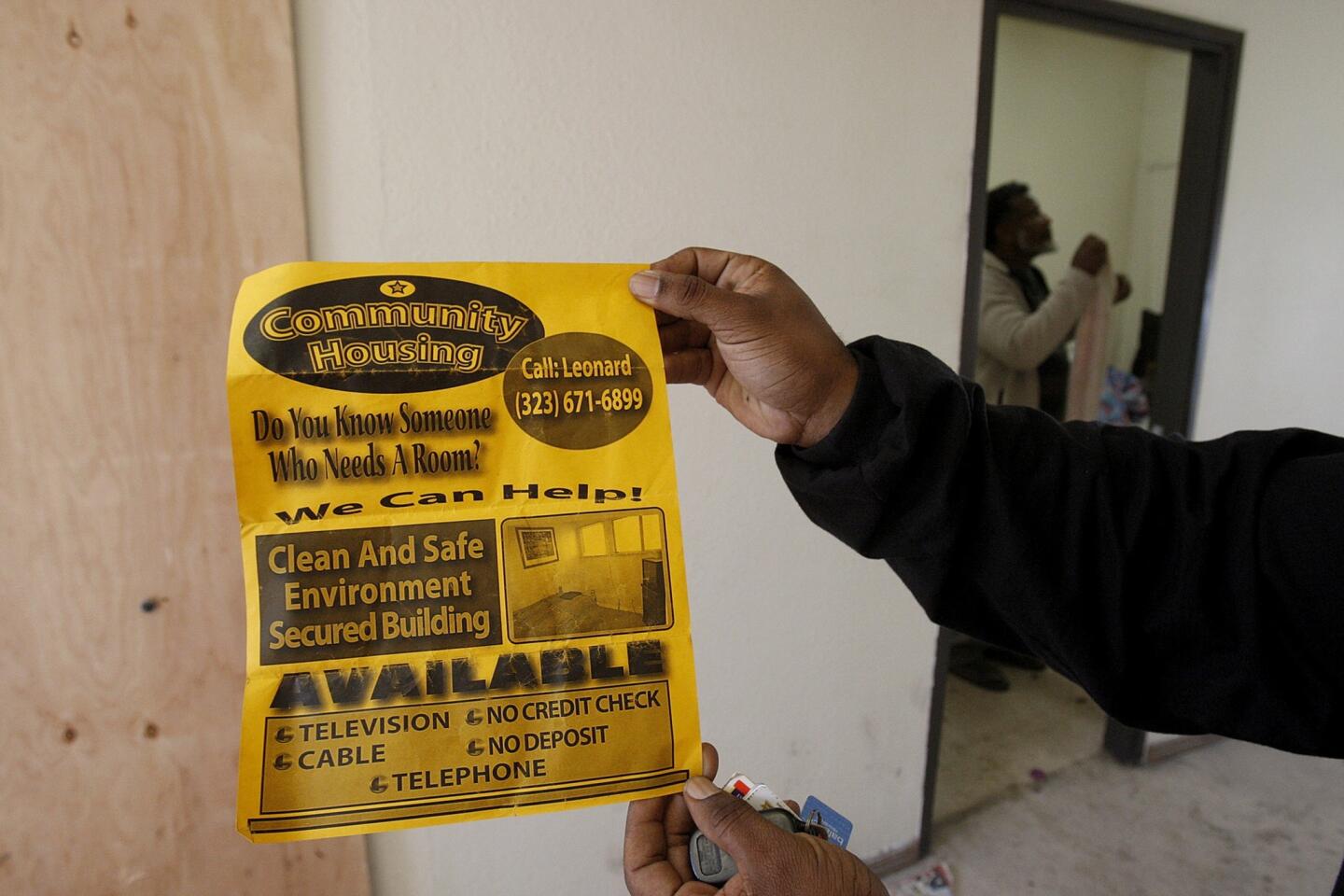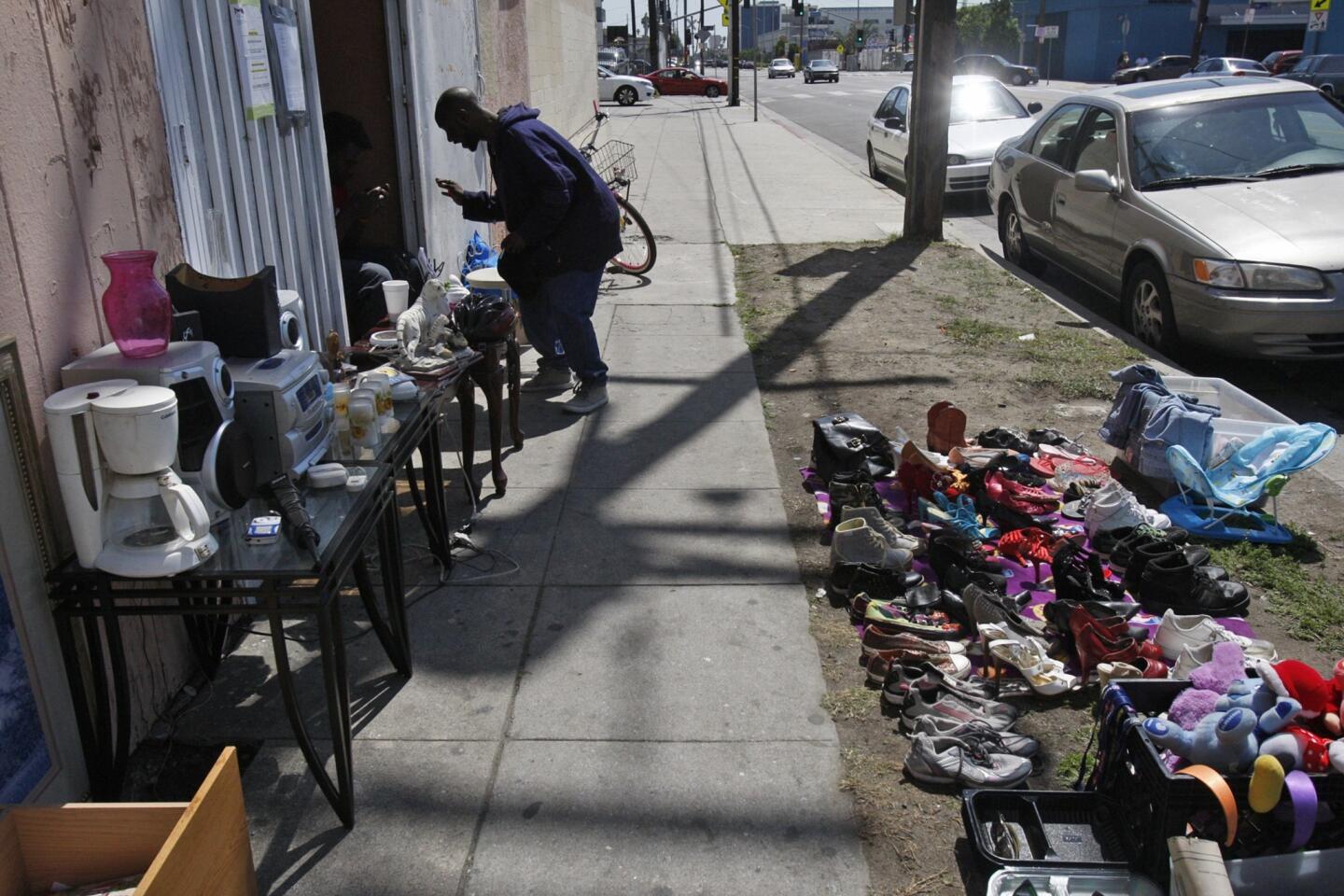Shortage of low-income housing pushes tenants into dangerous situations
Dozens of people shared only three showers in the building that Patricia McDowell called home for the last 2 1/2 years. Roaches skittered across the floor, she said, and lights went out and stayed out. In recent months, McDowell said she had to run an extension cord to another room to keep electricity going.
But when the Los Angeles Fire Department told McDowell and dozens of other tenants that they had to clear out of the building at 5700 S. Hoover St., citing dangerous conditions, she panicked.
Shabby as it was, she said, “it was my little home.”
The pending ouster of poor and disabled residents from an office building that officials said was illegally converted to apartments and left to deteriorate is drawing renewed attention to the squalid conditions many Angelenos endure for affordable rents.
Los Angeles County has 376,000 more “extremely low-income” households — earning less than $25,000 a year for a family of four — than it has apartments they can afford, according to a February report by the California Housing Partnership Corp., a nonprofit affordable housing consulting group. That shortfall, housing advocates say, pushes many to live in improperly converted offices and other dangerous situations. The Los Angeles Department of Building and Safety said it receives 2,500 to 3,000 complaints annually about illegal conversions, including garages and commercial buildings.
“This is not an isolated case,” said Lisa Payne, policy director at the Southern California Assn. of Nonprofit Housing. “There are buildings like this throughout the city.”
The situation at the Hoover Street building — where an estimated 42 residents rent rooms for as much as $600 a month — also has revived criticism of the city’s handling of unsafe housing. The Inner City Law Center, which is assisting the soon-to-be-displaced tenants, says the Department of Building and Safety took too long to act on documented problems at the building.
It’s not clear when people started living in the building, which city records show was abandoned and declared a nuisance property in 2007. That designation was lifted in 2010 after its current owners — a holding company called 5700 Hoover — sought permission to convert the former hospital into an office building, according to building records.
More than a year ago, Building and Safety got “miscellaneous complaints” about the building, according to city records. Building and Safety spokesman Luke Zamperini said those complaints were about parking spaces and didn’t mention any illegal use of the building.
In September, however, the building department received a complaint that the building had again been converted. The following month, officials declared the building “substandard due to illegal occupancy” and ordered the owner to stop letting it be used for living, sleeping, cooking or dining.
Attempts to reach the building’s owners Thursday and Friday were not successful. According to filings with the California secretary of State, the registered agent for 5700 Hoover is Ronald Perlstein, who runs a real estate firm in West Los Angeles that owned the building from 2007 to 2009 and sold it to 5700 Hoover. Perlstein did not return repeated messages seeking comment. Calls to a phone number on the Hoover Street building advertising rooms for rent were not returned.
On Thursday, the building was listed for sale on the website of Perlstein’s firm, Danco Housing, but the listing has since been taken down. A February blog post on the website called it a “great investment opportunity, but not for the faint of heart.”
City records show that on March 12 the owner applied to change its use to a “social rehabilitation facility.” Five days later the city held a hearing with the property owner, according to the Department of Building and Safety. It wasn’t immediately clear what issues were covered at the hearing. But days later, the Fire Department ordered the building to be vacated.
Zamperini said due process procedures accounted for the months that elapsed between the city’s October declaration that the building was substandard and the recent move to vacate the building. “This is not an unusual amount of time for this type of case,” Zamperini said.
City Councilman Curren Price won a two-week delay of the Fire Department’s order to vacate so residents could obtain relocation assistance. Los Angeles tenants in such cases are eligible for relocation payments of as much as $19,000, which the city collects from the property owner through a lien, if necessary. On Friday, the City Council approved Price’s motion to advance aid to the Hoover Street tenants. The Fire Department, which cited “myriad violations,” including a lack of installed smoke alarms, said a licensed security guard is checking the building hourly for fire hazards.
The case was complex, but “it is unacceptable to have residents forced out of their homes with this kind of short notice,” Price said in a statement Friday. “City departments must do a better job of communicating so that we avoid situations like these in the future.”
As of Thursday, McDowell had given away shoes she couldn’t store, thinking she would have to move immediately. Other tenants were giving away canned food on the street.
Francisco Covarrubias, director of tenant organizing for the law center, said the owner had offered tenants “buyout” payments to leave that were smaller than the relocation aid they were entitled to under city law, a temptation that was hard to resist as many headed to skid row agencies for help. Several residents said typical offers were $1,500 and some neighbors had taken the deal.
The Hoover Street building may be an extreme case, but it’s not unusual for landlords to offer cash to tenants to get them to move out voluntarily and skirt the city’s pricey relocation program, said Larry Gross, executive director of the Coalition for Economic Survival, a tenants’ rights group.
He’s been hearing more reports of such deals as the housing market heats up and building owners try to empty rent-controlled buildings and redevelop them to market-rate apartments.
Many renters don’t know their rights, Gross said, and at a vulnerable time often settle for far less than they are due.
“I’m sure it’s a lot more widespread than we’ll ever know,” he said. “The tenants are gone.”
More to Read
Inside the business of entertainment
The Wide Shot brings you news, analysis and insights on everything from streaming wars to production — and what it all means for the future.
You may occasionally receive promotional content from the Los Angeles Times.
